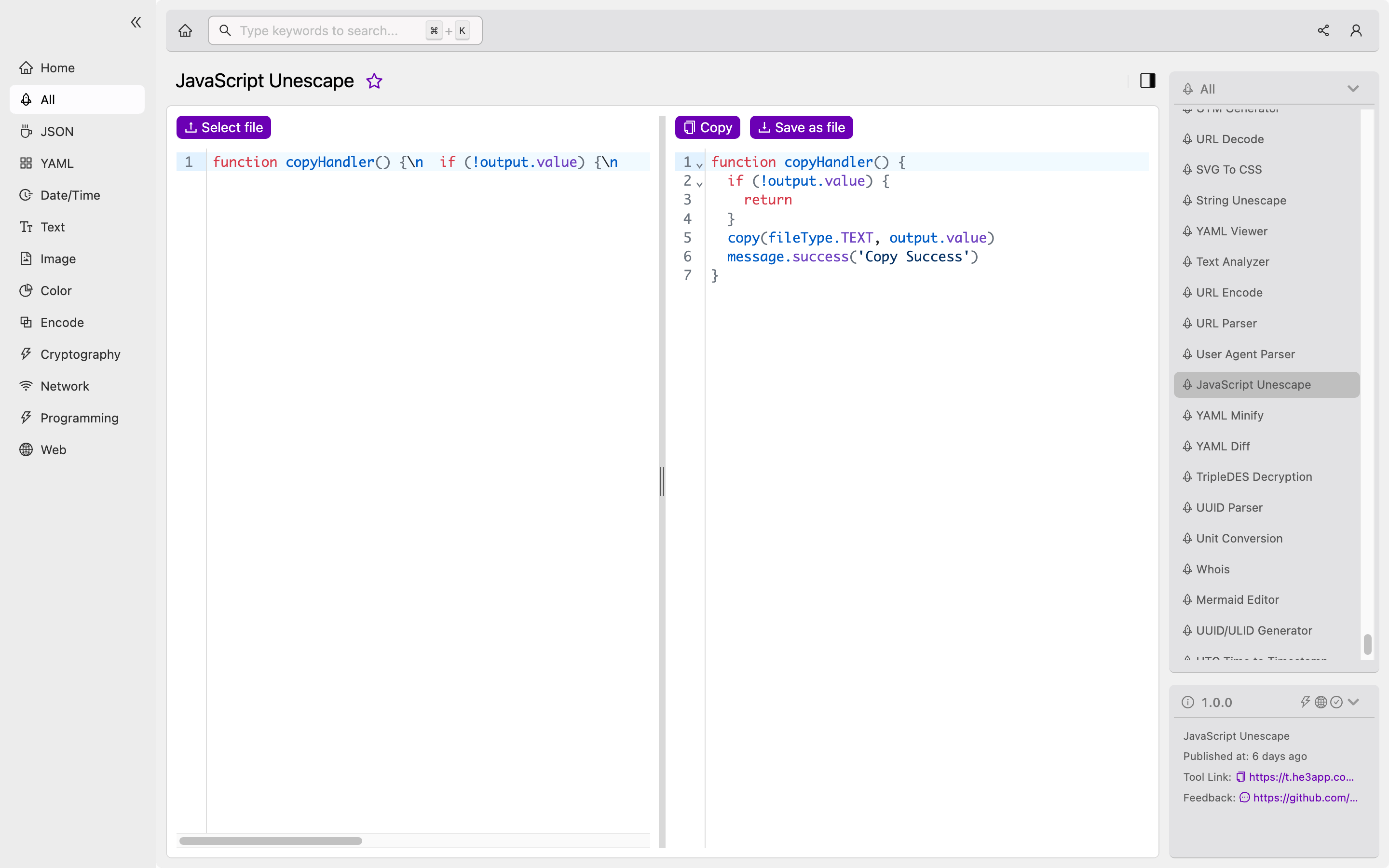Demystifying JavaScript Unescape
In the world of web development, security is always a top concern. Luckily, JavaScript provides developers with a tool that can help secure their code from malicious attacks - unescape().
What is JavaScript Unescape?
unescape() is a built-in JavaScript function that is used to convert escaped characters back to their original form. Escaped characters in JavaScript are characters that have special meaning in the language and are therefore encoded in a specific manner to avoid issues with code interpretation.
unescape() decodes these escaped characters by replacing each escape sequence with the character it represents. For example, %20 would become a space character, %3C would become <, and so on.
How Does JavaScript Unescape Work?
The unescape() function is straightforward to use; all you need to do is pass the escaped string as a parameter, and the function will return the original string.
let escapedString = "Hello%20World%21";
let originalString = unescape(escapedString);
console.log(originalString); // Output: Hello World!You can also use the decodeURI() and decodeURIComponent() functions to replace escaped characters with their corresponding unicode characters.
Key Features of JavaScript Unescape
JavaScript Unescape is a powerful tool for web developers that offers several features, including:
- Converts escaped characters back to their original form
- Enhances the security of web applications
- Can be used in conjunction with
encodeURI()andencodeURIComponent()to ensure that data is transmitted securely - Compatible with all modern web browsers
Scenarios Where JavaScript Unescape is Useful
JavaScript Unescape is useful in several scenarios, including:
- Parsing JSON data: When parsing JSON data, special characters are often escaped in strings. You can use
unescape()to decode these strings back to their original form. - URL manipulation: When building dynamic URLs, sometimes you need to send special characters as part of the URL. By encoding these special characters, you can ensure that they are properly transmitted and received. Then, you can use
unescape()to decode the URL and extract the original data.
Misconceptions and FAQs About JavaScript Unescape
Misconception #1: unescape() is obsolete and should not be used.
While it is true that unescape() has some limitations and should not be used for all situations, it is still a useful feature for web developers. The key is to use it appropriately and understand its limitations.
FAQ #1: What is the difference between unescape() and decodeURI()?
unescape() replaces only escaped characters that are not part of a URI, while decodeURI() decodes an entire URI. When dealing with URIs, it is generally recommended to use decodeURI().
FAQ #2: Can unescape() decode all escape sequences?
No, unescape() cannot decode all escape sequences. It can only decode escape sequences that represent single characters. Any escape sequence that represents a Unicode character or a multi-byte character will not be decoded correctly.
How to Use JavaScript Unescape
JavaScript Unescape is easy to use and can be implemented in several ways. One way is to use the built-in unescape() function. Or you can use JavaScript Unescape tool in He3 Toolbox (https://t.he3app.com?q69c ) easily.

Conclusion
In conclusion, JavaScript Unescape is a useful feature for web developers that can enhance the security of web applications. By understanding its key features and limitations, you can use it appropriately and ensure that your code is secure from malicious attacks.
References:
